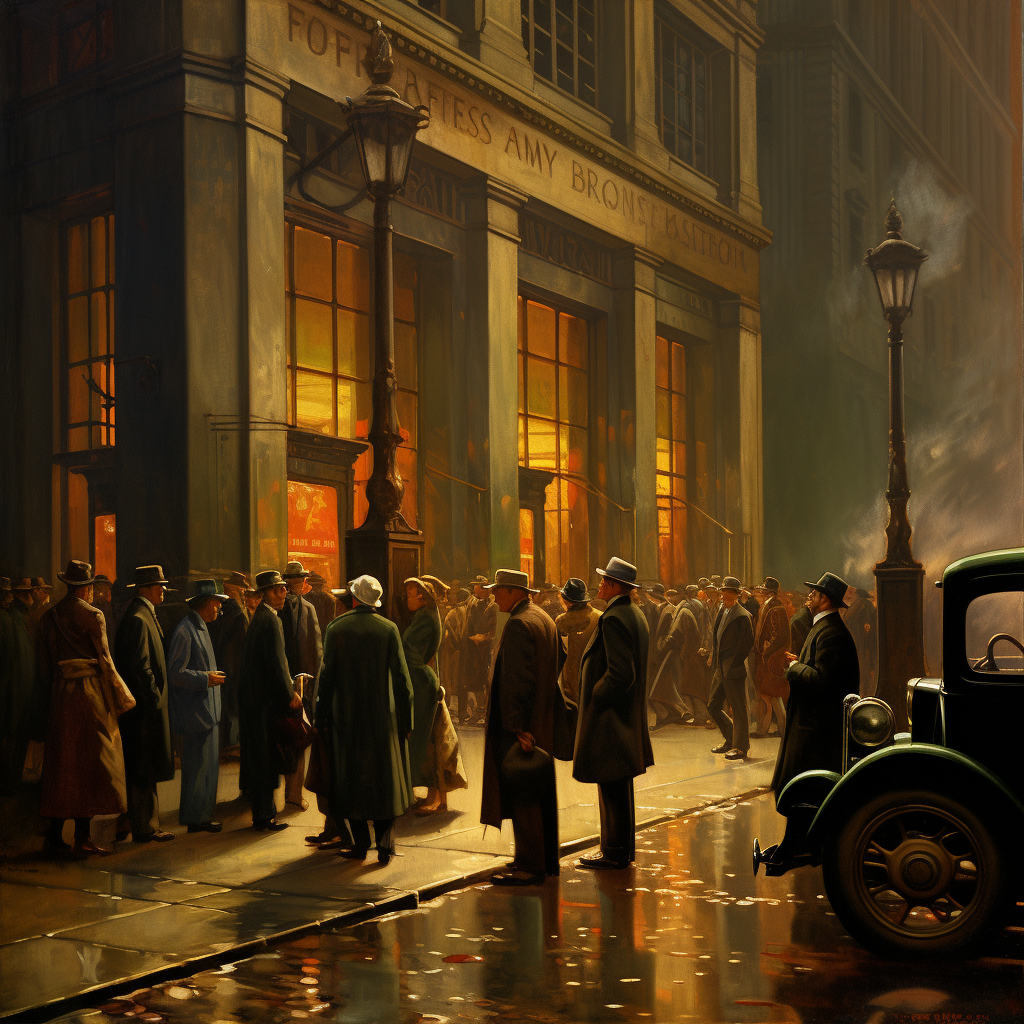The year 1929 marked a pivotal moment in the annals of economic history — the onset of the Great Crash. This cataclysmic event, synonymous with the Stock Market Crash of 1929, plunged the United States into the throes of the Great Depression, reshaping the global economic landscape and leaving an indelible mark on generations to come.

As stocks and crypto markets share similarities in behavior and investor psychology, it is crucial to draw lessons from such historical events. It has been almost 100 years since the crash happened. Let’s see if people are able to learn from happenings like this.
To truly understand the causes behind the dramatic stock market crash of 1929, we must rewind a decade to 1919, the aftermath of World War I. Returning soldiers and a growing population led to increased consumer demand, fuelling economic growth. The stock market reflected this optimism, with rising stock prices and increased investor confidence. America was flourishing, and people were confident that the good times would last forever. Everyday life was evolving, and an era of buying now and paying later seemed to have begun.
Many celebrities had been recruited to promote Liberty bonds, which later led to the creation of an investing culture. People turned to stocks, seeking new ways to get richer. Within a few years, approximately 3 million Americans had joined the market, borrowing enormous sums from banks and pouring them into stocks, chasing greater returns.
In the years preceding the crash, speculative fervor had gripped investors, leading to artificially inflated stock prices. This speculative bubble, divorced from economic fundamentals, created a precarious environment where the market’s true worth was obscured by speculative exuberance.
Herd mentality was one of the key factors that caused such mania, a phenomenon prevalent in the crypto space as well. News and social media trends can drive mass buying or selling, sometimes without a rational basis.
Certainly, there were skeptics, labeling this frenzy a gambling casino manipulated by professional speculators and predicting an inevitable crash. However, their voices were drowned out and dismissed by the majority. Others, curious about the unending rise in prices, were met with brokers’ confident responses like, “It’s a global economy now.”
By 1928, the stock market had become a playground for speculators. Many investors engaged in risky trading practices, buying stocks on margin and investing beyond their means
Let’s remember the lack of regulation. Literally nothing was done from the side of the law to protect people from that fever. President Hoover himself would assert: We have reached a higher degree of comfort and security, than ever existed before in the history of the world.
In September 1929, the market turned “unexpectedly” volatile, with all the known consequences.The tipping point came in late October 1929. On October 24, known as Black Thursday, the stock market experienced a sharp sell-off as investors rushed to unload their holdings. Black Monday followed on October 28, further eroding market values. However, it was Black Tuesday, October 29, 1929, that etched itself into history. On this fateful day, panic selling reached unprecedented levels. The market crumbled, shedding vast amounts of wealth within mere hours. Could you imagine that all the markets could plummet by 90% in just six days? Back in those days, people didn’t have to imagine it because they went through that and even more in a short time.
Despite the fact that the Great Crash is considered one of the reasons for the subsequent Great Depression, it provides great lessons. Many aspects of that historical event sound strikingly similar to some issues we face today.
The consequences of the Great Crash were profound and far-reaching. Banks collapsed under the weight of their losses, triggering a domino effect that crippled the financial system. Unemployment soared, consumer spending plummeted, and businesses shuttered, casting a long shadow of economic despair.
The lessons drawn from the Great Crash reverberate through time, shaping financial regulations and policies.


Great read
October 22, 2023 at 7:04 amThanks for your thorough analysis!
October 31, 2023 at 12:23 pmThere are a lot of objective and subjective factors that influence the economy and people’s behavior, but it is so important to look back at history to try to avoid global mistakes.